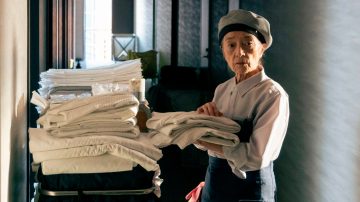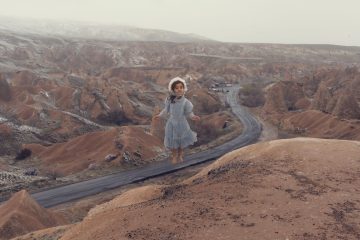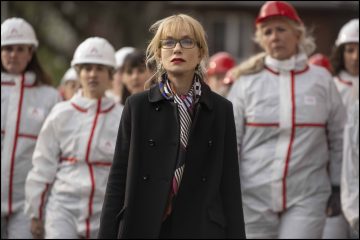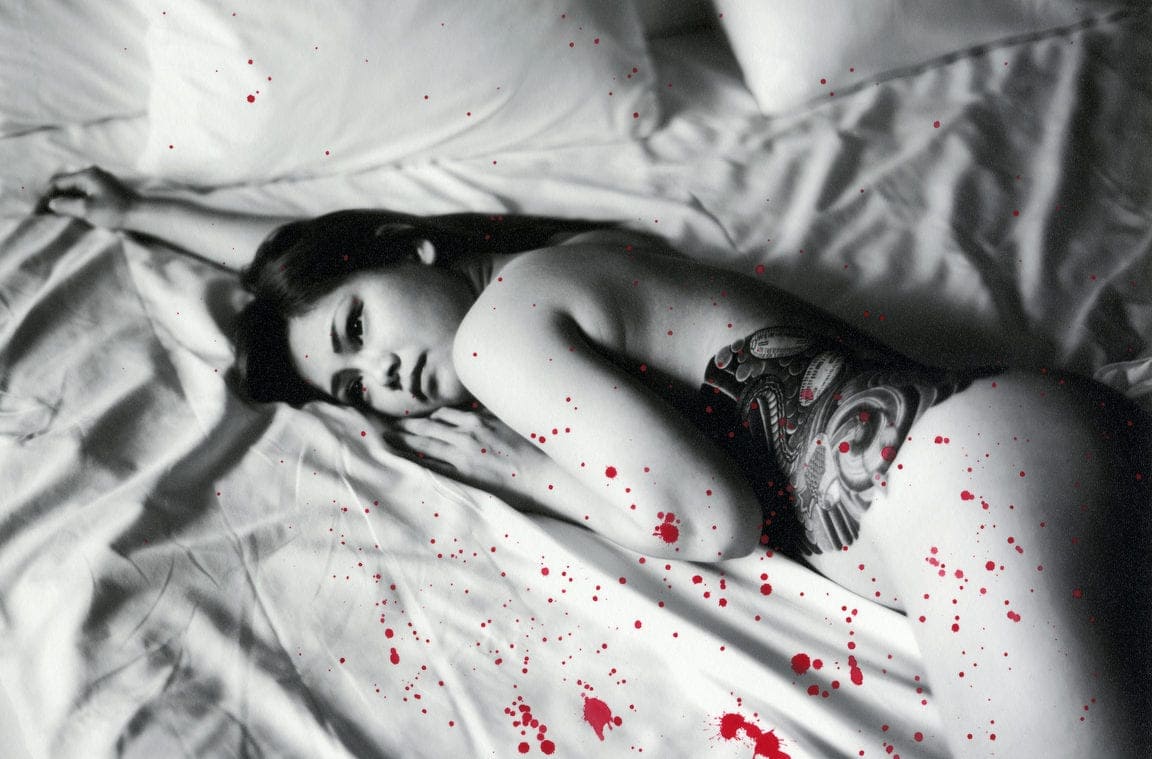
Chloé Jafé was a hostess in Tokyo before a chance encounter landed her in the heart of the Yakuza, Japan’s largest organised crime syndicate. We speak to her about her series; I give you my life which centres around the often overlooked Yakuza wives.
Chloé, can you tell us how this series came about?
I’d always been interested in women’s role in society and also in gangsters in general. I watched Gokudo no tsunamachi (1986), a series about Yakuza’s wives, and I read the book Yakuza Moon written by Shoko Tendo, where she tells her own story of being the daughter of a Yakuza. These inspired me to embark on this journey.
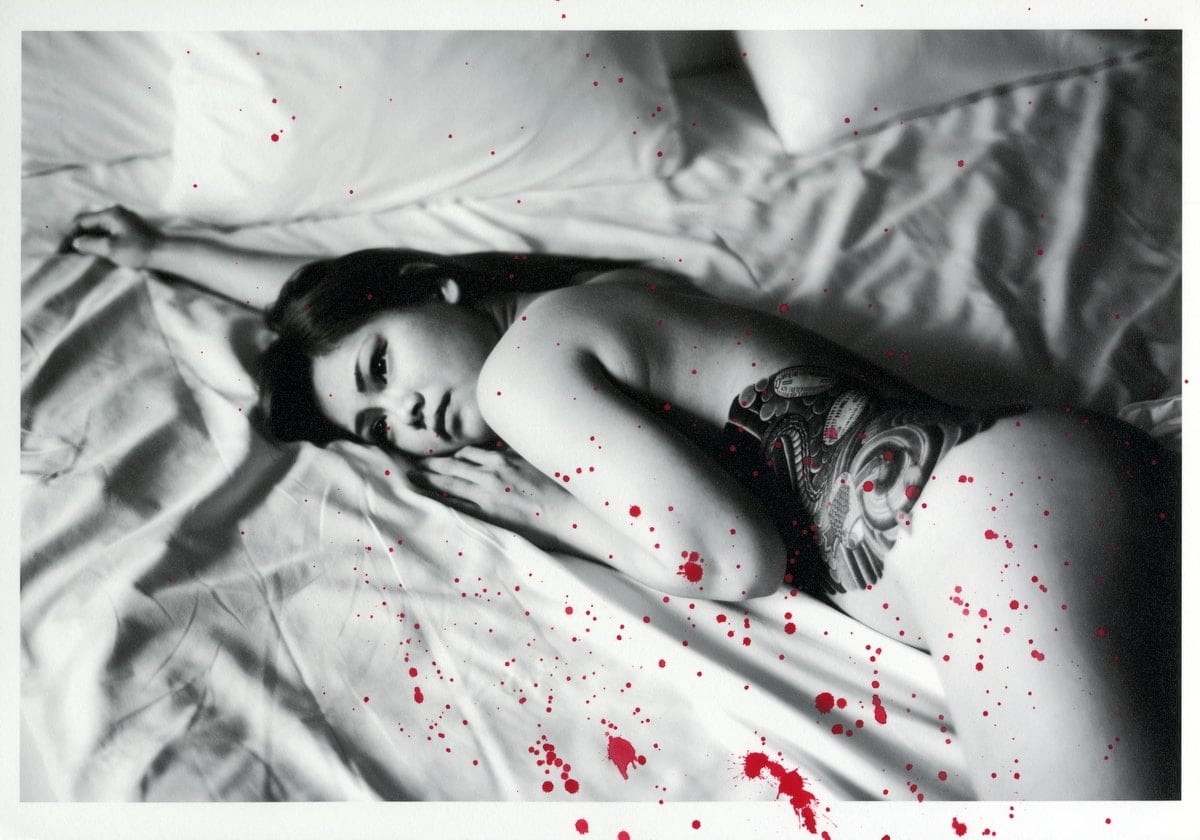
2016, Naha, Okinawa – Urara chan lying on a bed (photograph with acrylic)
Is it true that you had to meet one of the Yakuza bosses before you could photograph the women? Can you talk us through the details of what that was like?
I believe that meeting the boss was lucky because I met him on the street. After working as a hostess for a few months, I realised that women had very little to say about what they could and could not do and that I needed to get proper permission from someone highly positioned in the hierarchy.
Hierarchy is essential in Japan. I could not have done this work without the boss, and meeting him was an incredible human adventure. Our first official meeting was pretty much like it is in films. I got picked up by his bodyguards in a fancy black car. I knew I was meeting him but didn’t know where they were taking me. The adrenaline was high.
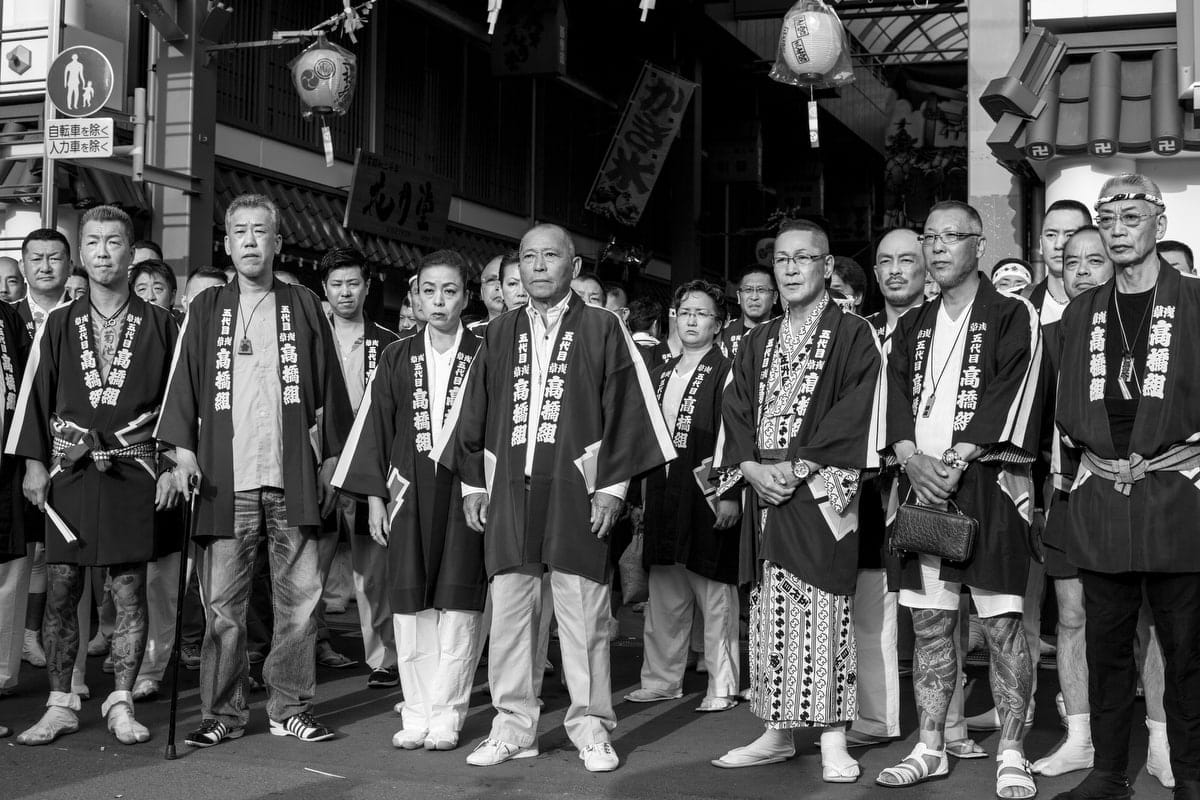
2015, Asakusa, Tokyo: The boss and the members early morning at the opening ceremony of the matsuri (Japanese festival)
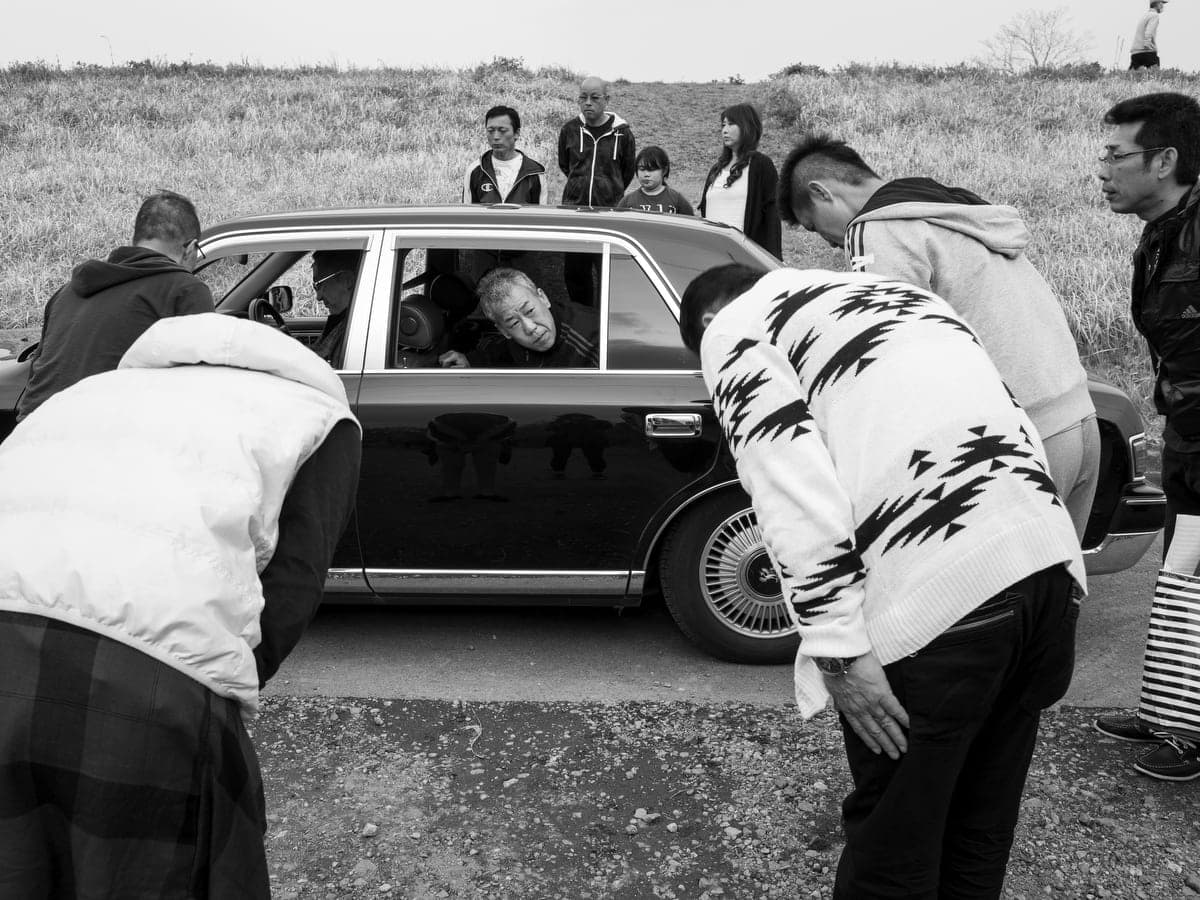
2016, Tochigi: The recruits greet one of the bosses after a reunion
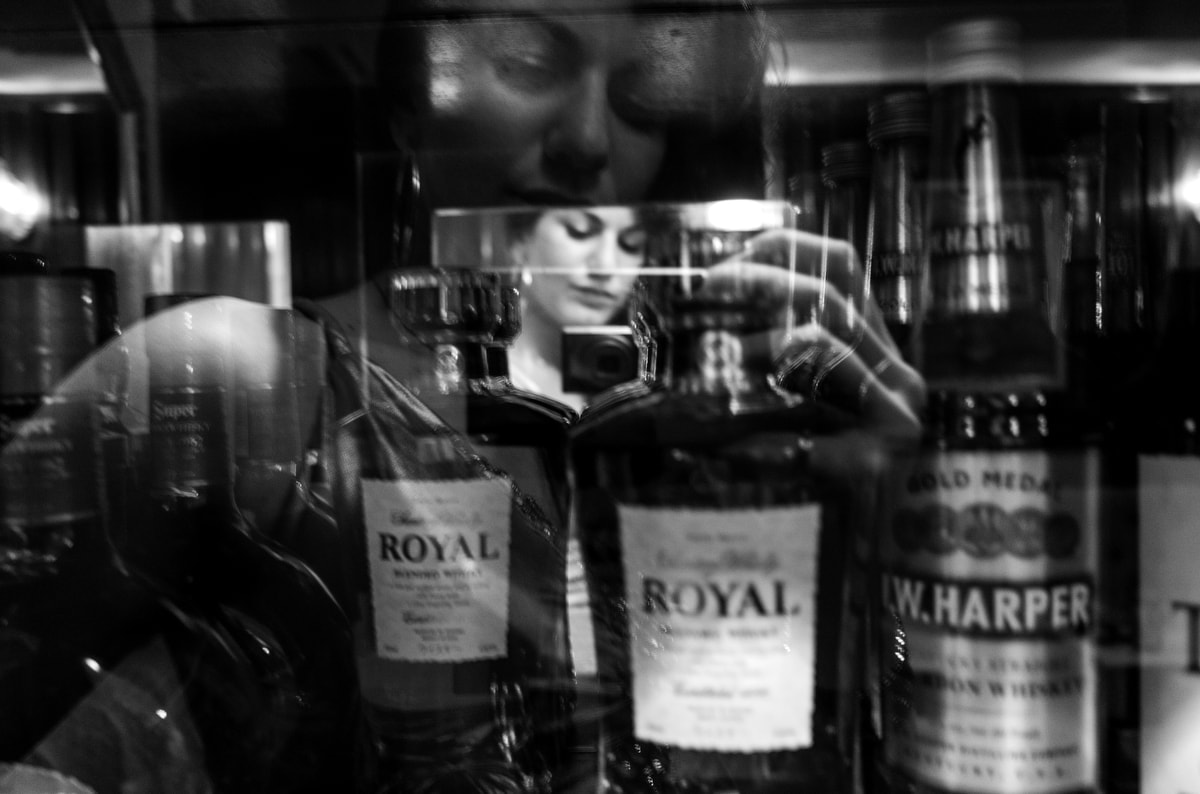
2014, Ginza, Tokyo: Self-portrait of Chloé, who became a hostess for a few months to observe and get closer to the Yakuza wives
Can you tell us some of the challenges you faced while shooting this project? Were you ever told you couldn’t photograph?
Challenges were omnipresent in this project. To start with, I had to learn Japanese because even if I had wanted to, I couldn’t find any fixers who would like to get involved. In Japanese society, many things are untold; you are expected to sense them. It applies to when you are “allowed” or not to take a picture.
During my first meeting with the boss, I took his picture, but at that time, I was shaking slightly and wasn’t sure if I was allowed to reveal his identity, so I only included half of his face in the frame. Still, I like this portrait because it shows the beginning of my relationship with the boss.
Another challenge was always being ready/available to meet to show my respect and motivation. Usually, I would receive unexpected calls and had to be prepared in the next half-hour, which can be pretty challenging in Tokyo, considering the size of the city. Of course, being late was not an option. On the other side, I had to face a lot of last-minute cancellations.
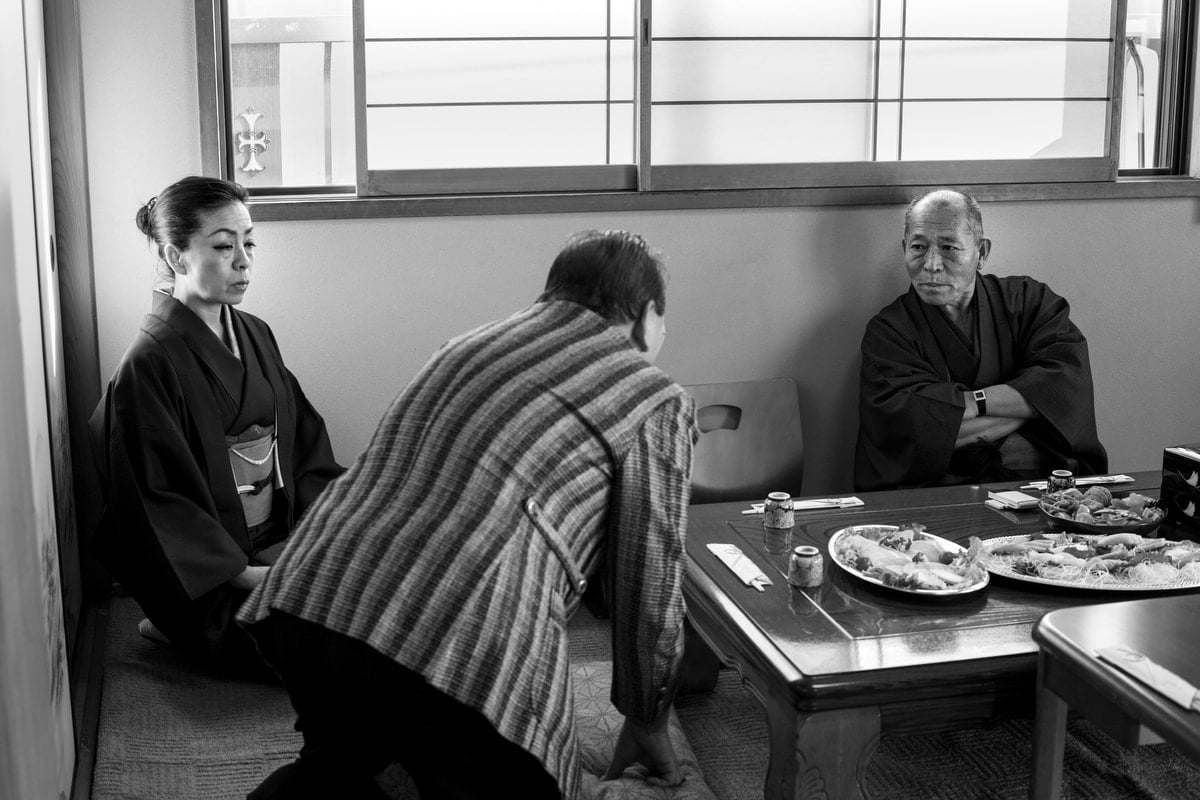
2016, Saitama: A neighbour comes to pay his respects to the boss and his wife on New Year’s Day.
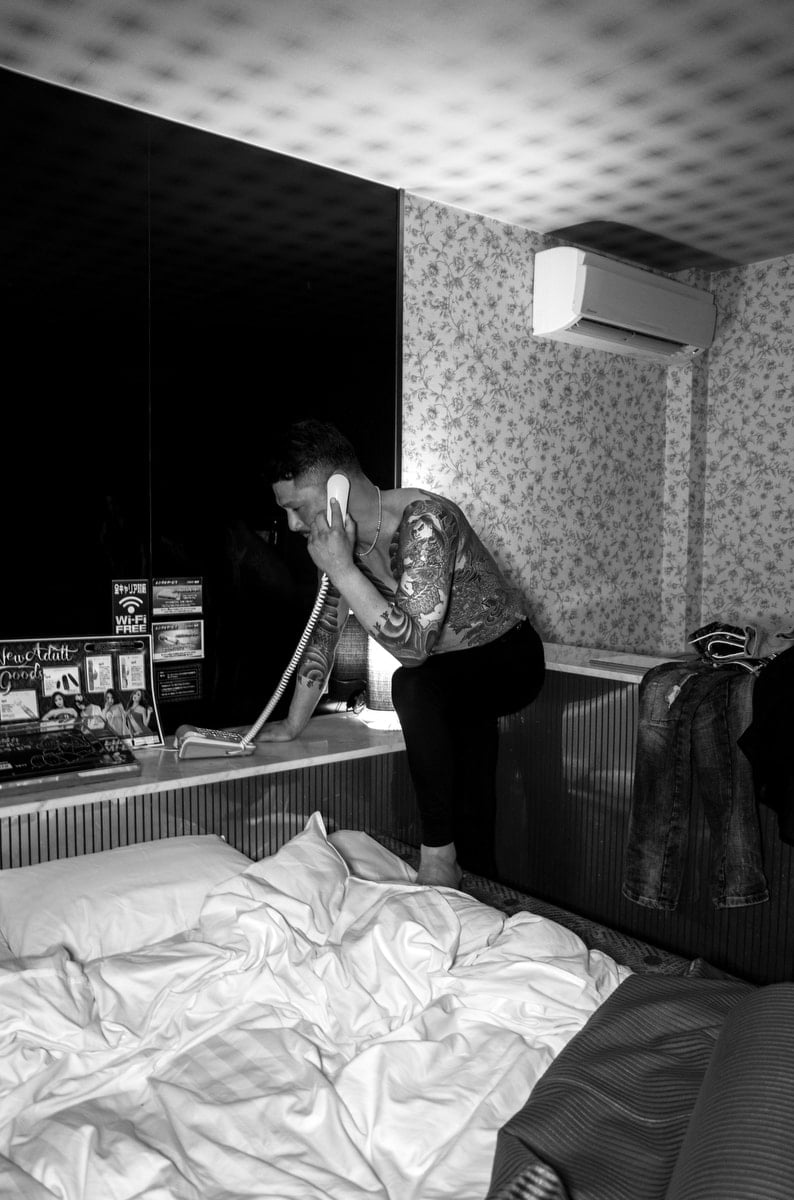
2019, Osaka: With Taka in a Love Hotel
How do women fit into the patriarchal structure of the Yakuza? What is their role?
Yakuza aren’t more patriarchal than the rest of the country, so most Yakuza wives have the lives of “basic” Japanese housewives. The group I followed functioned like a very organised family, where everyone had his/her role.
Depending on which Yakuza you marry, your role will change. The wife of the boss has a vital role in the group. She is the boss’s shadow. She walks by his side and knows everything. Her role is to look after the young recruits, and she also advises the boss.
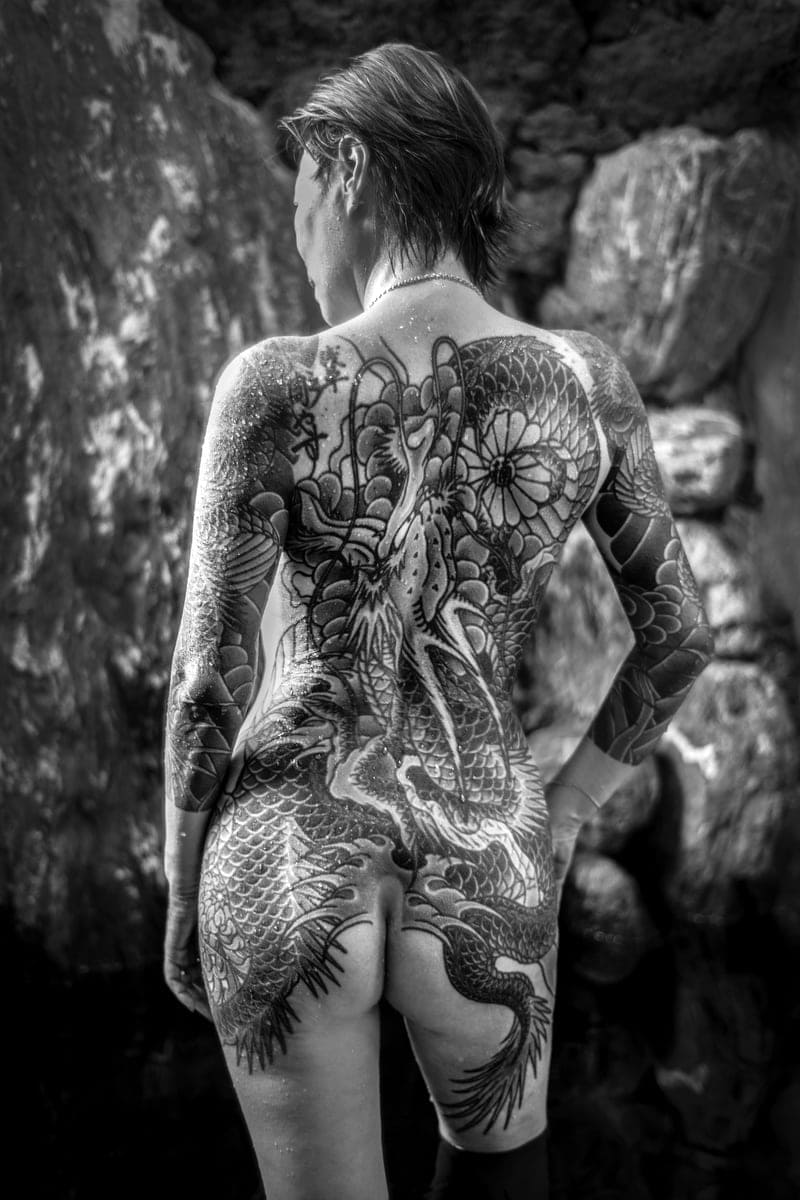
2018, Chiba: Yumi san in a traditional Japanese bath (onsen)
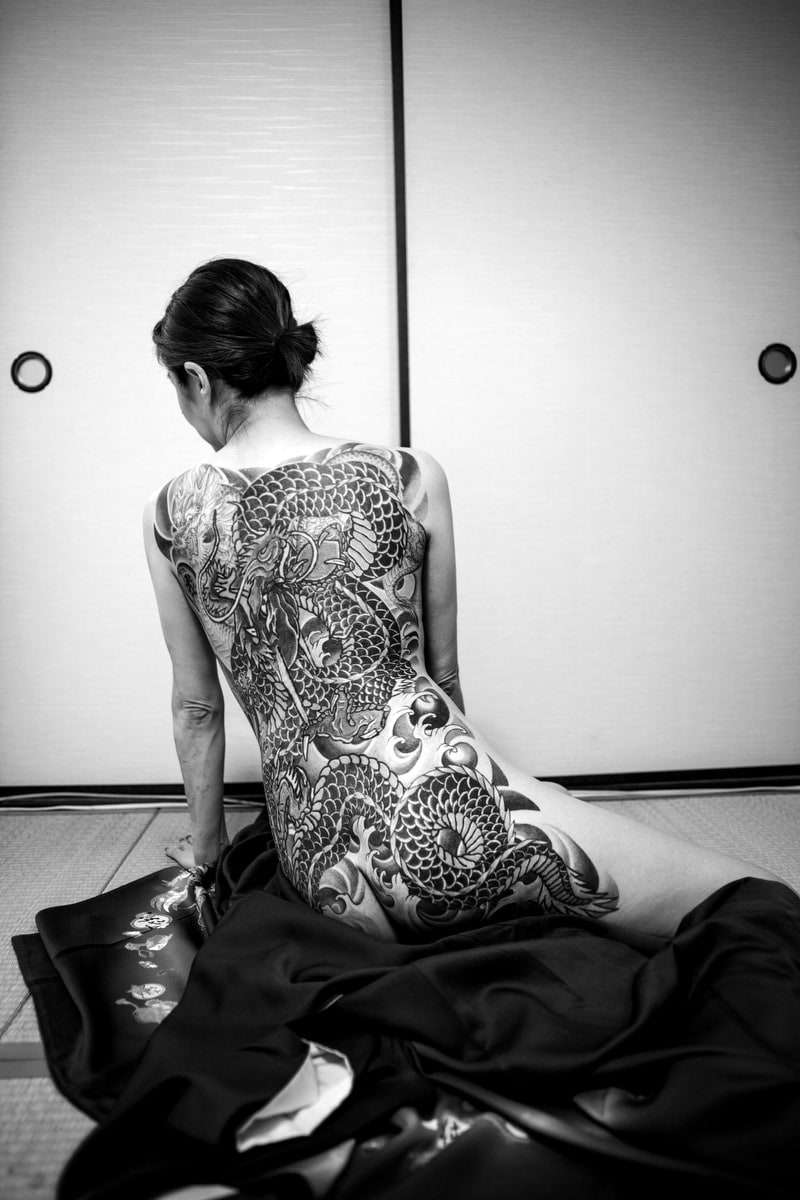
2016, Osaka: Jun with her kimono
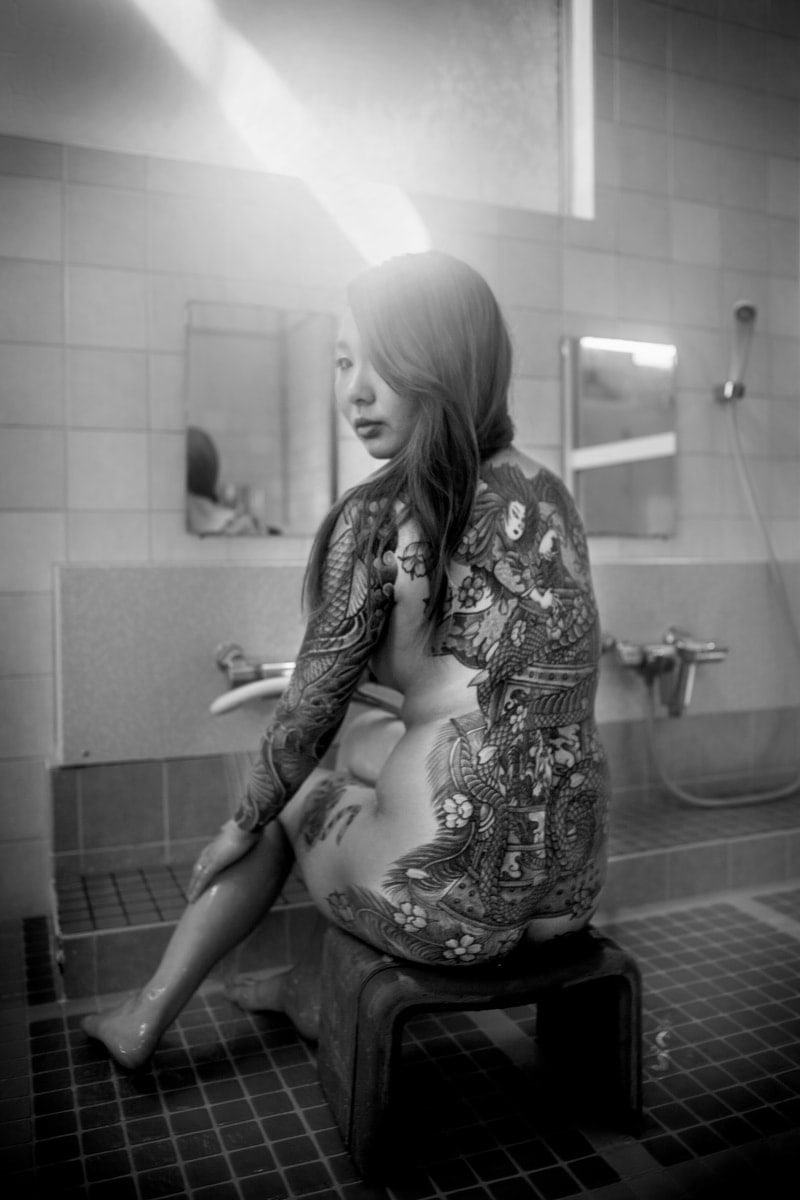
2016, Takamatsu: Anna san having a shower before getting into a traditional Japanese public bath (sento)
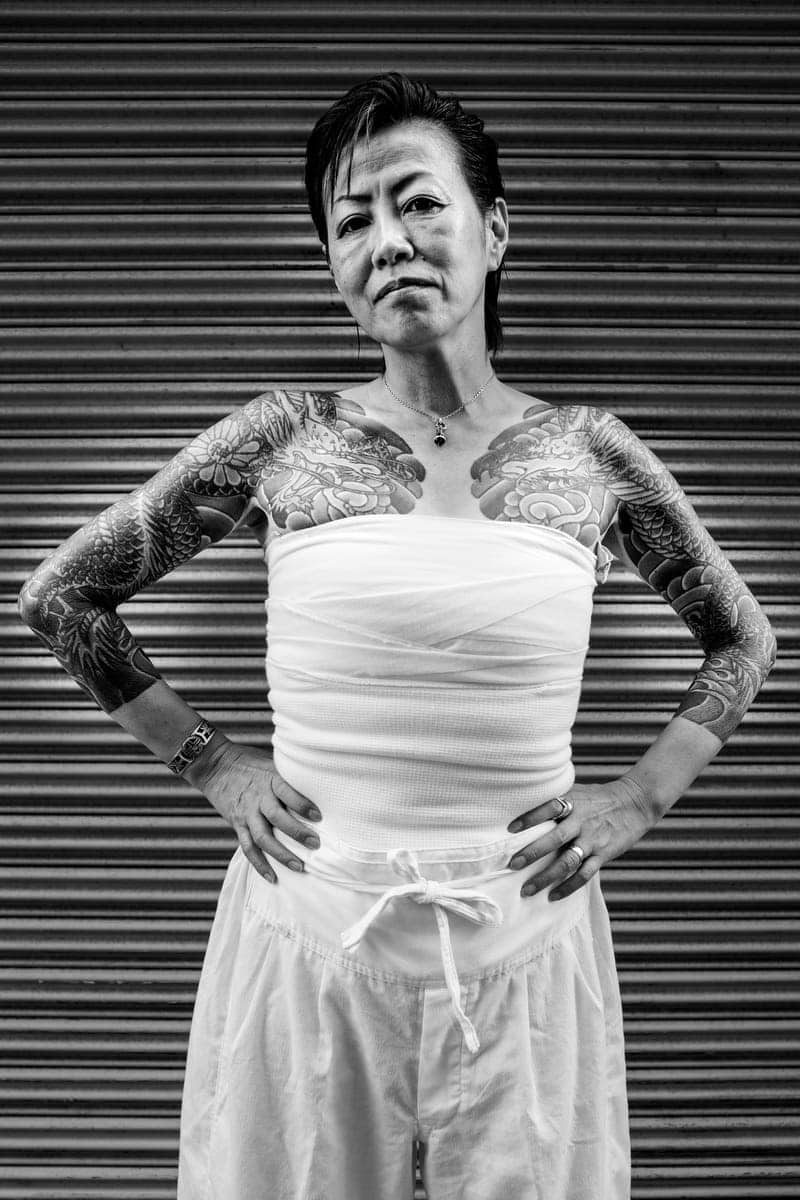
2016, Asakusa, Tokyo: Yumi san during the Sanja matsuri
Could you select a single photo from the series and tell us the story behind it?
The picture of the man bowing to the boss was taken during the new year on the 1st of January 2016. After going to the temple in the morning, the whole group had lunch at the boss’s house. I say lunch, but it started in the morning and ended when the sun went down. You can see this neighbour visiting to pay his respects to the family. The boss’s wife is on the side, yet she still looks solid. I like this image because it is very representative of their relationship. She is his shadow, but she shines with all her strength.
What’s your creative process like? How much of your projects is pre-planned, and how much is down to chance and just seeing what happens?
I guess my practice is very intuitive. I had this particular work in mind when I was still living in Paris, but I just decided to book a ticket one day and off I went. The other two projects I did in Japan came to me.
I didn’t plan to do a project in Okinawa initially, but it came across me, and I had no choice but to photograph it. The same goes for Osaka. It’s about attraction. Sometimes it comes one way or another, but once I am connected, I have to throw myself entirely into it. I don’t want to be a superficial observer and usually have to participate. I find it difficult to set the boundaries between the arrivals and departures in a project. The people I photograph become part of my life.
I think photography itself is largely down to chance and seeing what happens. It would be dishonest to say the contrary.
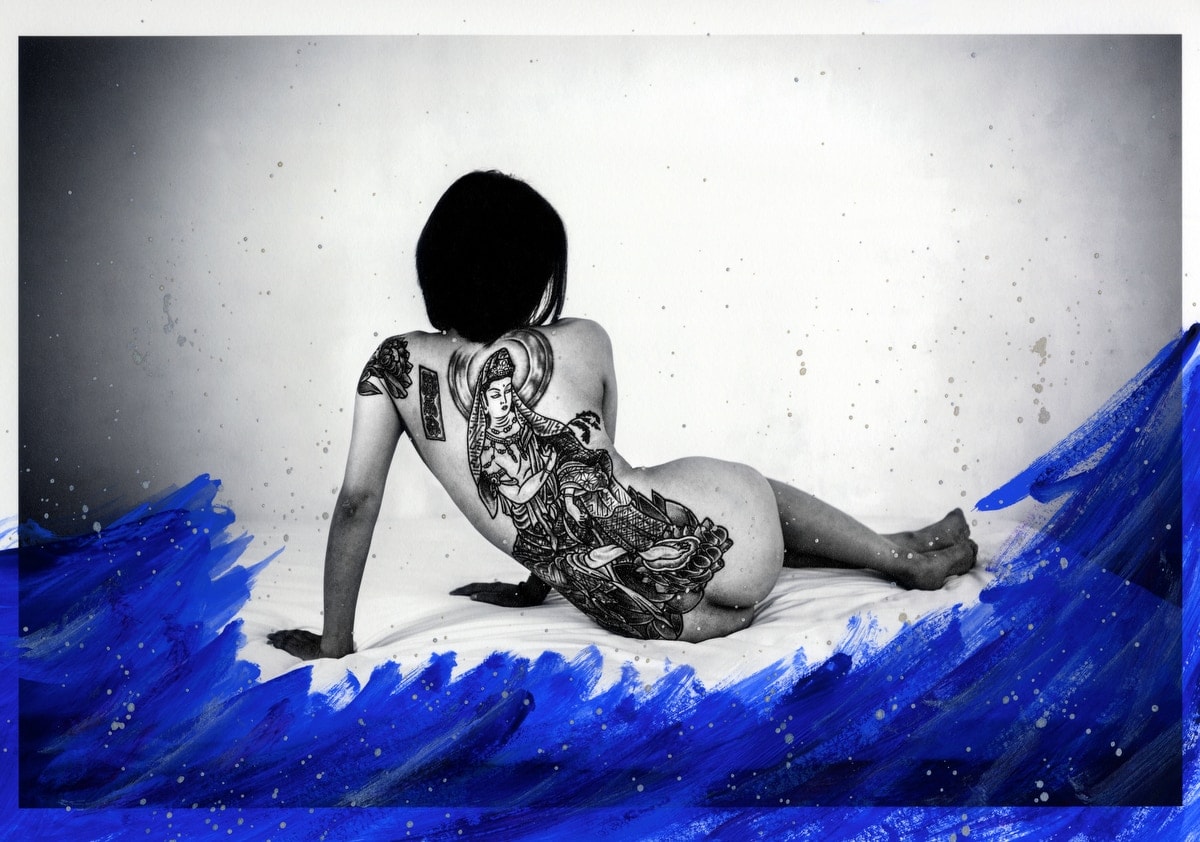
2016, Takamatsu: Midori chan (Photograph with acrylic)
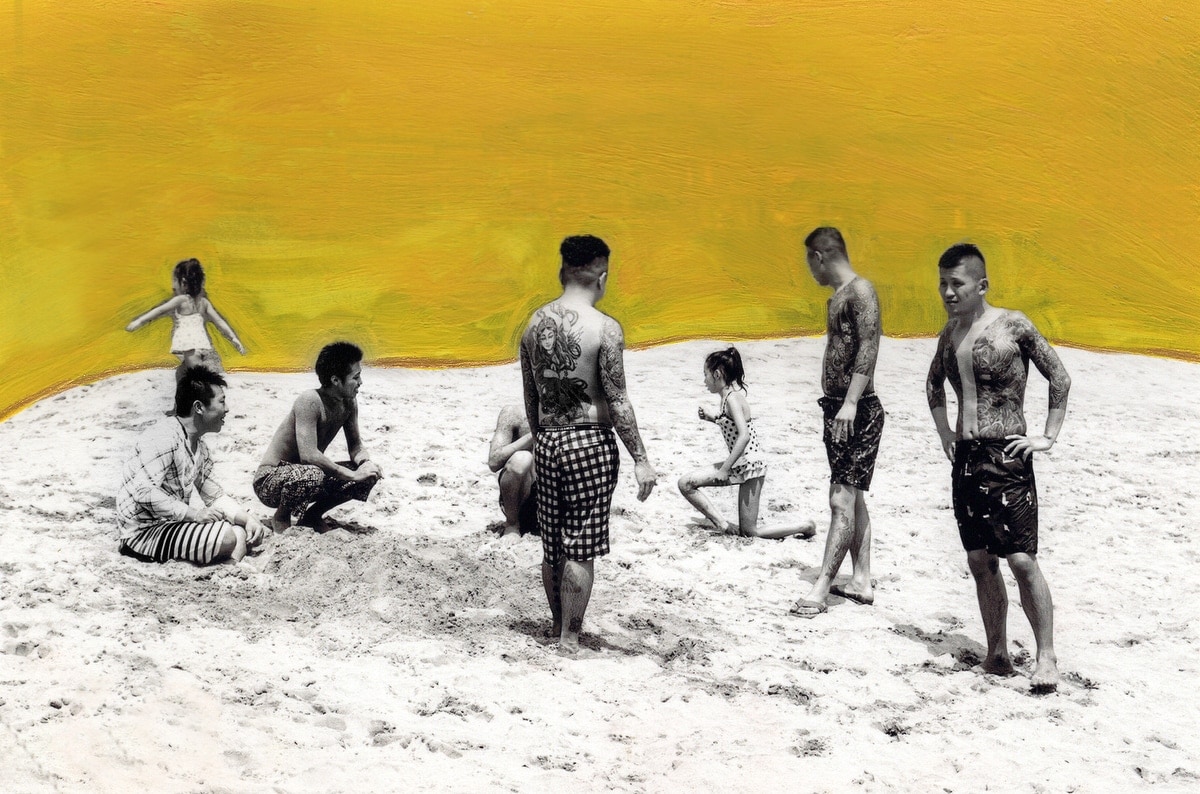
2014, Chiba: Young recruits looking after children on the beach at the celebration of “Umi no hi”, the day of the sea (Photograph with acrylic)
You have a special connection to Japan. What keeps you returning to the country?
I lived in Japan for seven years. I initially thought I’d probably spend a year there, but one project led to another, and here I am now with the trilogy ‘Tokyo-Okinawa-Osaka’ seven years later. In this very controlled society, the margins in Japan fascinated me. I guess it’s where I could find part of myself.


